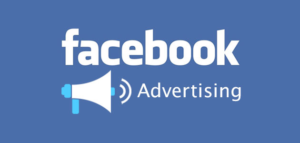
When it comes to social media advertising, Facebook is currently the top platform. Companies looking to advertise on social media, however, should not just look at platform growth as the only determining factor of where to spend advertising dollars. There needs to be a series of criteria to determine if a company should, and could, advertise on Facebook.
Take a step back
and make sure the social media
platform is the right fit.
What Goals Need to Be Achieved?
Like any marketing initiative, the first step should be to define what the goals are for advertising on Facebook. Not all goals are optimised for every advertising platform. Having a firm understanding of what a platform like Facebook offers is key to determining if it’s right for a company.
Facebook offers a wide variety of advertising objectives with its platform, including:
- Brand Awareness
- Boost Organic Facebook Posts
- Website Traffic
- Engagement
- Lead Generation
Who is the Target Audience?
After defining goals, the next step is to figure out what specific audience needs to be targeted to achieve those goals.
It is essential to take a step back and evaluate all social media platform options. While Facebook is the biggest social media ad platform, there are many other social media sites that might align closer with the marketing goals.
Below is a list of other social media platforms, their target audience, and main goals:
- LinkedIn – Business-focused users – Generating leads.
- Twitter – New and existing users – Increasing brand awareness.
- Quora – Top of the funnel users – Improving company thought leadership.
What Are Facebook’s Targeting Options?
If Facebook is the right platform to achieve goals, the next step is to determine how to utilise their targeting options to optimize results. Facebook offers a variety targeting options to make sure the right audience sees the right ad.
Facebook audience targeting options include:
- Location
- Demographics
- Interests based on user interactions and “likes”
Facebook also offers a variety of ways to advertise to customers that have already interacted with a business. This includes:
- Custom Email Lists
- Website Retargeting
- Targeting Current Fans
Targeting audiences that are already familiar with a business is a great way to keep that business in the front of users’ minds and promote additional product or service benefits.
What Types of Ads and Images Should Be Used?
Facebook ads has always been a visual platform. Unlike Google search ads, having an eye-catching, relevant image or video is essential to find success on Facebook.
Companies need to make sure that they can create new images that align with the overall goal of the program. For example, if a white paper is being promoted in the ad, a relevant image with the title of the white paper should be created.
It is also worth considering images that are being used for other advertising platforms, such as LinkedIn or Google Display. If images already exist, and they align with advertising goals, it would save time to re-purpose these images. Understanding Facebook image requirements is important to determine if this is possible.
How Much Money Should Be Invested on Facebook?
Once the audience and ads have been established, the last topic to consider before launching a Facebook campaign is what the initial investment should be. Spending money on Facebook is easy, but spending it effectively requires a strategy.
With a specific audience and high-quality ads, business’ can make sure that their dollars are spent on the most relevant clicks. While there is no right answer to how much money should be put into Facebook ads to start, it should be an amount the business is comfortable with.
Once a campaign is launched, keeping an eye on results and optimising audience targeting and ad copy is key. As ads become more efficient and results improve, more budget can be added to help increase goal results.
Conclusion
While there may be some temptation to quickly jump into advertising on Facebook, it is essential to take a step back and make sure the platform is the right fit. Understanding what the marketing goals are, who the target audience is and what Facebook can be utilised for, is essential. Once these questions are answered, it will become clear if advertising dollars should be spent on Facebook.





